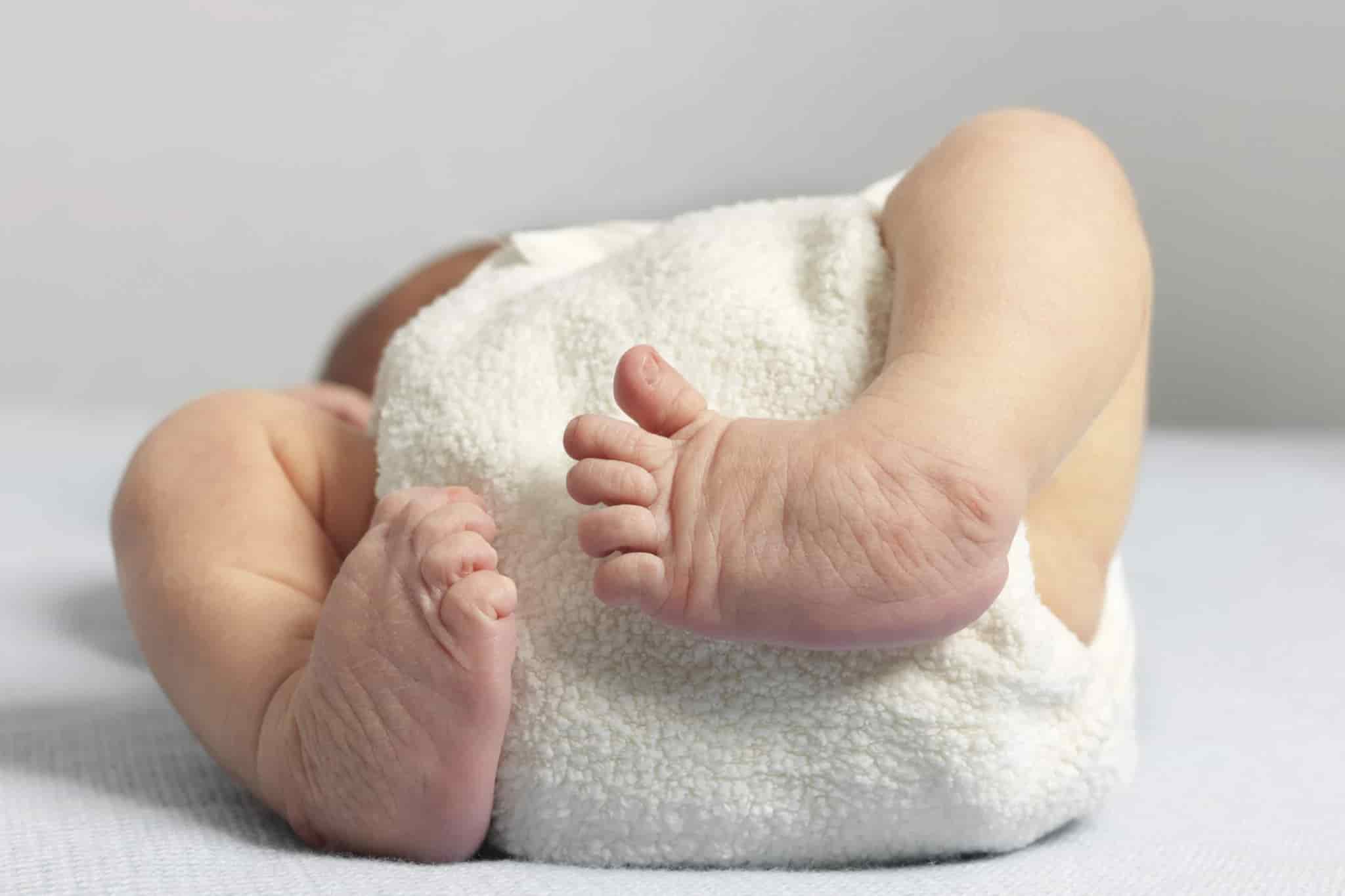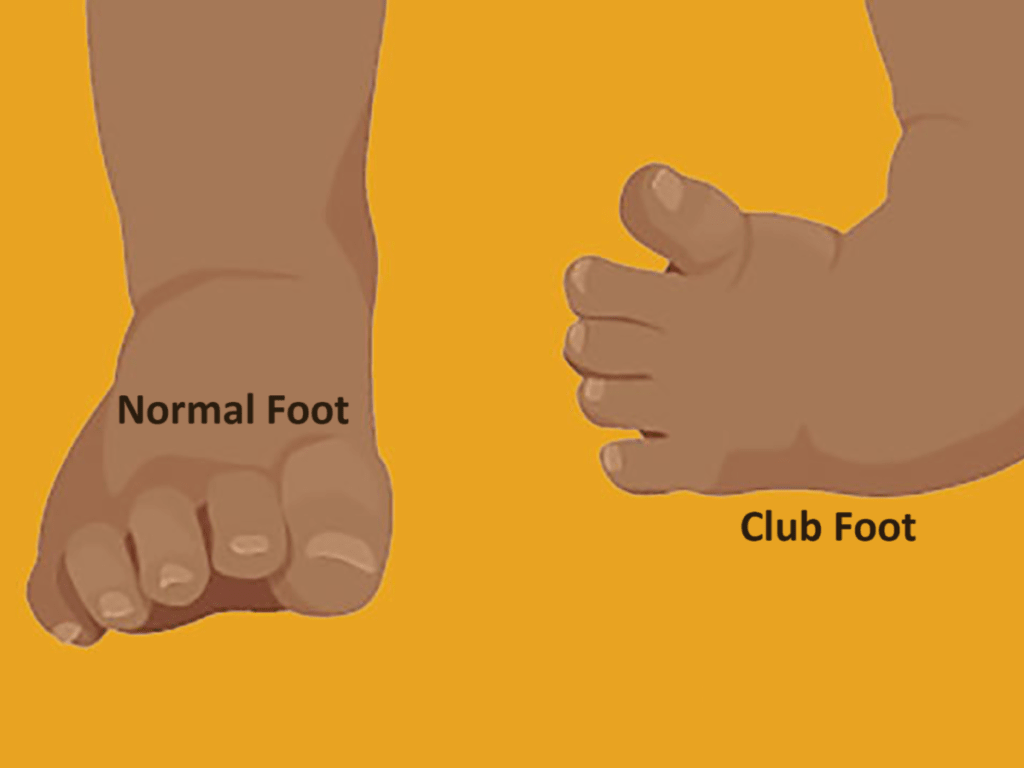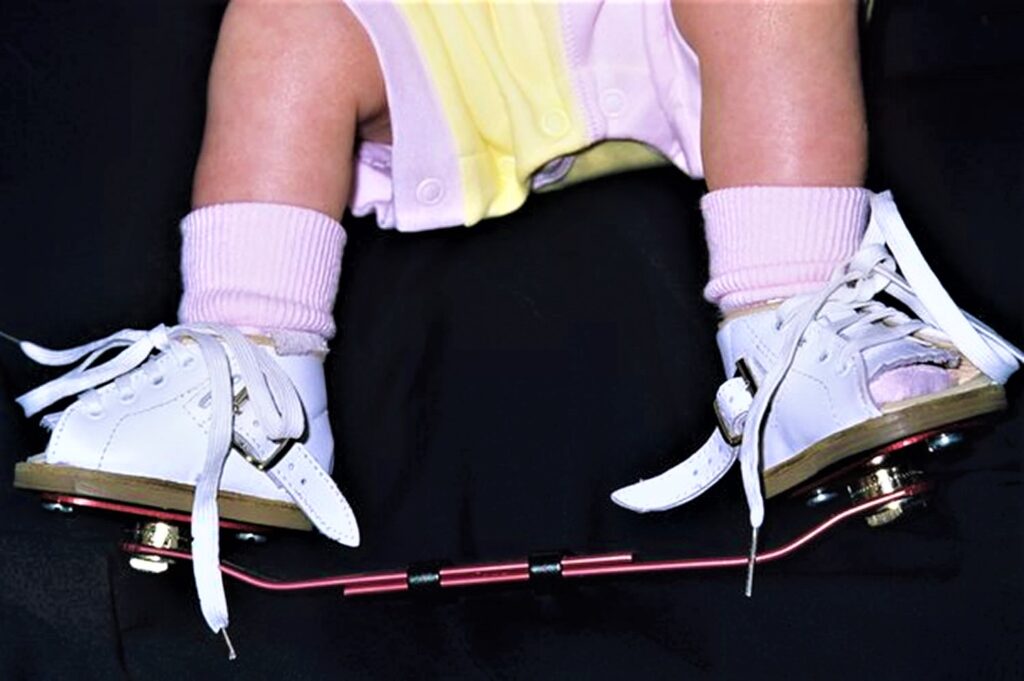BEING BORN WITH CLUBFOOT
Some of the deformities in a child start from the womb. Clubfoot is usually a congenital foot deformity. Almost one in every 1,000 live births might have clubfoot. This makes it one of the more common congenital or present at birth foot deformities.
Clubfoot is usually not painful during infancy and the deformity might remain permanent if not treated on time. The condition makes the infant’s foot turn inward as the tissues connecting the muscles to the bone or tendons are shorter than usual. Sometimes the foot is turned so severely that the bottom of the foot faces sideways or even upward. This hampers a wide range of physical activities even walking.
Clubfoot can range from being mild to severe. Around half of children suffering from clubfoot have it in both feet.
The condition is sometimes spotted during routine prenatal ultrasound scans. Though, it’s more easily diagnosed after the birth as the doctors can properly examine the baby’s feet.

WHAT DOES CLUBFOOT LOOK LIKE?
The condition gives a child’s foot a stubby appearance. The child’s foot turns inwards to an extent of the toes pointing to the opposite leg. The foot is sometimes abnormally twisted at the ankle, leaving the sole facing backward. The foot bones are deformed, and the Achilles tendon is overly tight as it is shorter than usual.
WHAT CAUSES CLUBFOOT?
Clubfoot in babies might develop due to structural problems with the lower limbs. This would affect the position in which their feet are held. The muscle weakness on the outer side of the leg or short tendons and issues with the way nerves transmit messages impacts the foot positioning. Rarely, it can also be the sign of a serious underlying health condition such as spina bifida (a spine defect).
The cause of clubfoot in most cases is unclear. As an expectant parent, you will be relieved to learn that most babies born with the condition are otherwise healthy.
Clubfoot deformity is classified into 3 different sections:
- Idiopathic – It is a congenital anomaly but the cause of the same is unknown. This is also referred to as talipes equinovarus. It has been observed that baby boys are twice as likely to have clubfoot compared to baby girls.
- Neurogenic – This is caused by an underlying nervous system condition such as Spina bifida. The conditions may result due to a disruption in a neuromuscular pathway, possibly in the brain, the spinal cord, a nerve, or a muscle. It can also develop later in childhood due to cerebral palsy or spinal cord compression.
- Syndromic – This condition is found along with an underlying syndrome or clinical conditions that include arthrogryposis, constriction band syndrome, tibial hemimelia, and dystrophic dwarfism.
Environmental factors may also play a role in developing clubfoot. It has been researched that there is a link between the incidence of clubfoot and maternal age, as well as whether the mother smokes cigarettes, and if she has diabetes.
WHAT ARE THE SYMPTOMS OF CLUBFOOT?
Clubfoot is not painful for babies as they’re not using their feet to carry their weight. If untreated, this condition can create serious mobility issues as the infants get older. An infant born with clubfoot experience:
- The top of the foot twists downwards and inwards.
- The arch is more distinct and the heel turns inward.
- The foot may look upside-down.
- Calf muscles tend to be underdeveloped.
- The affected foot is slightly shorter than the other, especially at the heel.
- The child may feel discomfort or pain when walking.

A health care professional diagnoses the clubfoot when a baby is born and sometimes it can be detected before birth.
The risk factors for clubfoot include:
- Gender: Baby boys are twice as likely as baby girls to be born with clubfoot.
- Genetics: Children whose parent was born with clubfoot have a higher chance of having the same condition. The risk is higher if both parents have the condition.
HOW DO DOCTORS DIAGNOSE CLUBFOOT?
The condition is visible immediately after birth. It can also be detected before birth with the help of ultrasound if both feet are affected. In case clubfoot is detected before birth there is no treatment possible until after the baby is born.
The doctor would run more tests to diagnose other health problems if the condition is detected during pregnancy or after birth, such as spina bifida and muscular dystrophy.
X-rays may also help to observe the deformity in more detail.

HOW TO TREAT CLUBFOOT?
Clubfoot does not improve without treatment, as leaving the foot untreated increases the risk of complications as the child grows. The doctor would start the treatment during the weeks after birth. The goal of the treatment is to render the functionality of feet and free of pain.
- The Ponseti method: The method involves a specialist manipulating the baby’s foot with their hands to correct the bend in the foot. They would then cast a plaster from the toes to the thigh, to hold the foot in position. The cast is normally for a week and is done very gently, with no pain. The doctor may suggest minor surgery to release the Achilles tendon.
- The French Method: This method consists of daily stretching, exercise, massage, and immobilization of the foot with nonelastic tape. The treatment aims to move the foot slowly to the correct position. The taping and splinting continue till the child is 2 years old. Even when the problem is not fully corrected, the appearance and function of the foot will improve significantly.
- Surgery: This is advised when other methods do not work. Surgery helps to adjust the tendons, ligaments, and joints in the foot and ankle. This would help in releasing the Achilles tendon or by moving the tendon that goes from the front of the ankle to the inside of the foot. The invasive surgery releases soft tissue structures in the foot by stabilizing the foot using pins and a cast.
Children suffering from clubfeet tend to walk on the sides of their feet leading to large callouses and chronic pain. When the clubfoot is treated the children will be able to run and play like other children. In case if the clubfoot is left untreated there will be complications.
Usually, there will be no pain or discomfort until the child comes to stand and walk. As it will be hard to walk on the soles of the feet, the child will have to use the balls of the feet, the outside of the feet, and in very severe cases the top of the feet. The children are also at a high risk of developing arthritis.
OUTLOOK
A well-corrected clubfoot looks no different than a normal foot. Sometimes clubfoot can relapse, especially if treatment is not followed properly. If it appears again, some of the treatment stages may need to be repeated.
If you or anyone you know is suffering from clubfoot, our expert providers at Specialty Care Clinics will take care of your health and help you recover.
Call us on (469) 545-9983 to book an appointment with our specialists.
